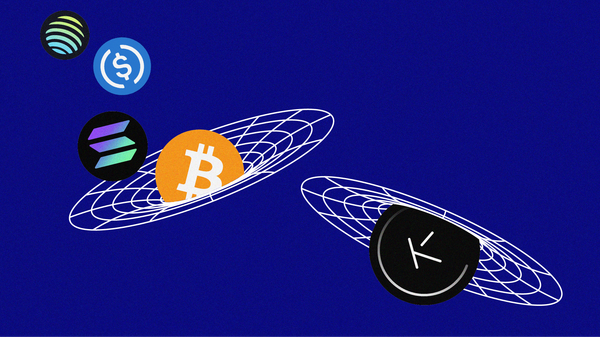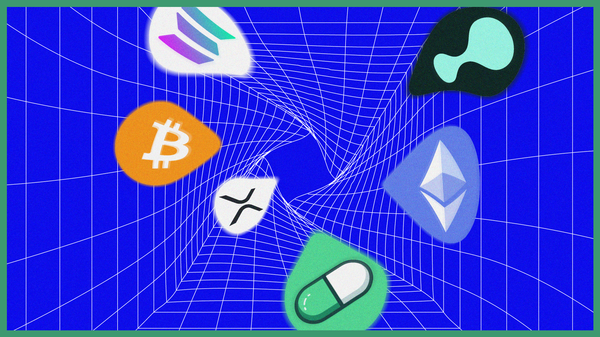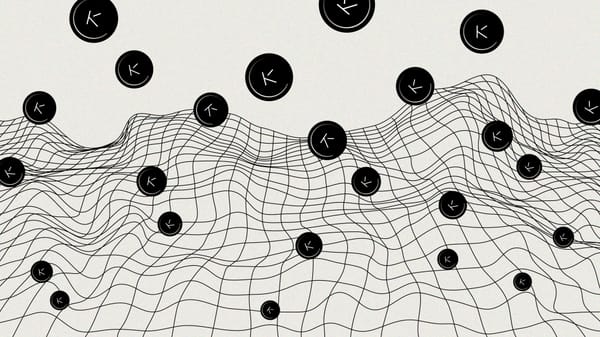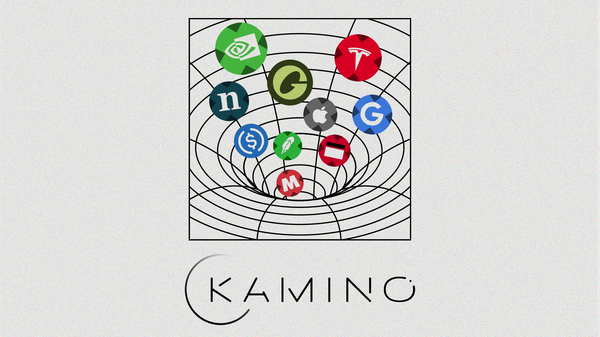9 AI/Infra Protocols You Should Know About
What are the latest innovations in the AI and modular infrastructure sectors?
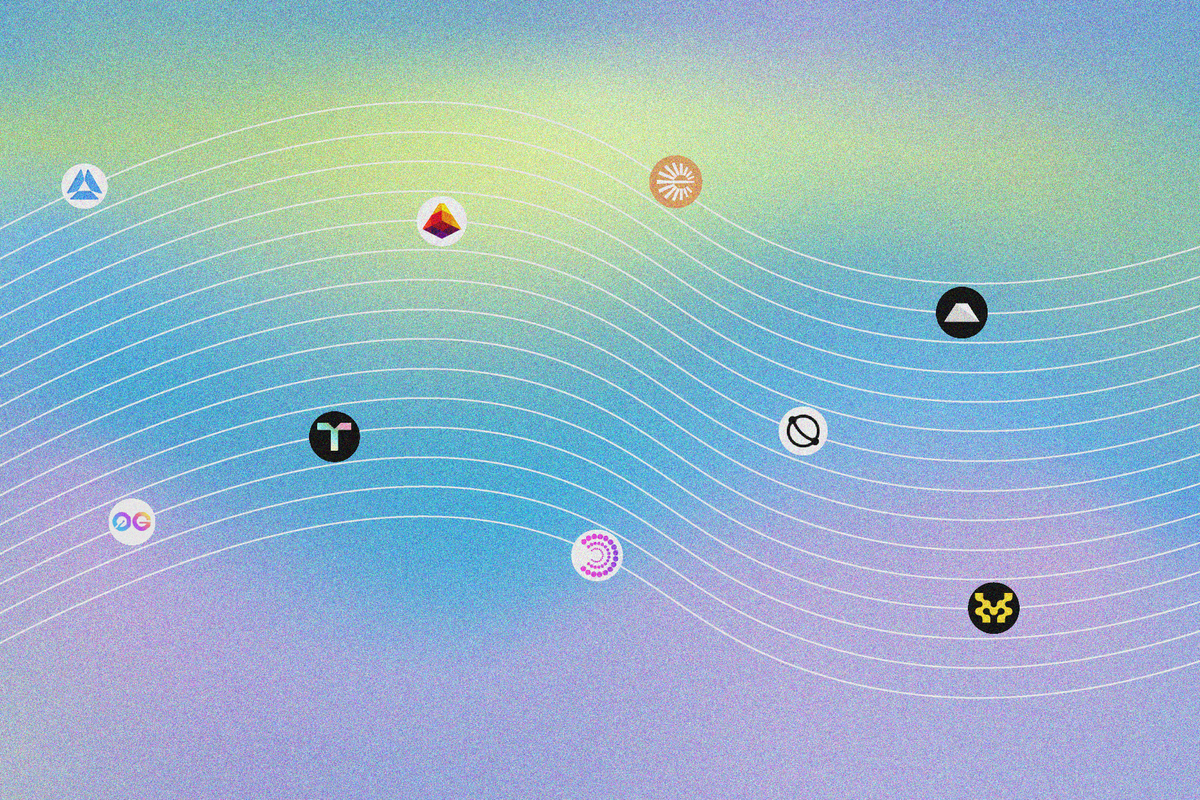
Introduction
2024 is the year of infrastructure and artificial intelligence.
Even though memecoins have pulled numerous 100x and made lots of cryptobros wife-changing (heuuu life-changing) money, the space has also seen multiple huge innovations in other sectors. Ethena has managed to reach a supply over 2 billion USDe, becoming one of the biggest innovations in the DeFi sector. Solana and Sei have democratized parallel execution, allowing those L1s to reach extremely high throughput in production. And Eigenlayer, which is set to release its long-awaited token after having introduced restaking.
The crypto market never stops, and neither does innovation. Infrastructure and AI will be in the spotlight for the upcoming months, so let’s have a quick look at 9 promising projects in those sectors.
Thanks for reading On Chain Times! Subscribe for free to receive new posts and support my work.
Artificial Intelligence
1️⃣ ZeroGravity
ZeroGravity, also known as 0G Labs, defines itself as the first modular AI chain. Behind these buzzwords lies a promising goal: elevating data availability to the next level. You're likely aware that training AI models requires vast amounts of data. If we aim to truly integrate AI on-chain, a high-speed and highly scalable data availability solution becomes imperative. ZeroGravity aims to achieve this scalability by dividing the workflow of data availability into two lanes: data publishing and data storage. This model allows ZeroGravity to achieve a data throughput of 50 Gbps, compared to competitor rates of 1.5 MBps, as reported by one of the 0G founders. This concept has already attracted significant attention, enabling the project to raise $35 million in a pre-seed round from major VCs such as GCR, Hack VC, Delphi Digital, and others.
2️⃣ Nim Network
NIM Network is the first RollApps to go live on dymension mainnet. One can certainly say that their plans are huge! NIM aims to become the ultimate environment for both crypto-native and fun AI games. To achieve this ambitious goal, the project focuses on the development of AI Gaming Agents. While this term might sound intimidating and broad, AI Gaming Agents are virtual players that mimic human control. The primary purpose of these Agents is to enhance the immersive quality of gameplay for human players like you and me. With NIM, anyone can use, develop, or deploy AI agents without permission, which can later be utilized and improved upon by other network participants in their applications. Ultimately, these agents will be monetized, and their owners will collect the generated revenue. As web3 gaming is poised for exponential growth, AI Agents are likely to play a decisive role in making these games as entertaining as their traditional counterparts such as Fortnite, FIFA, and others.
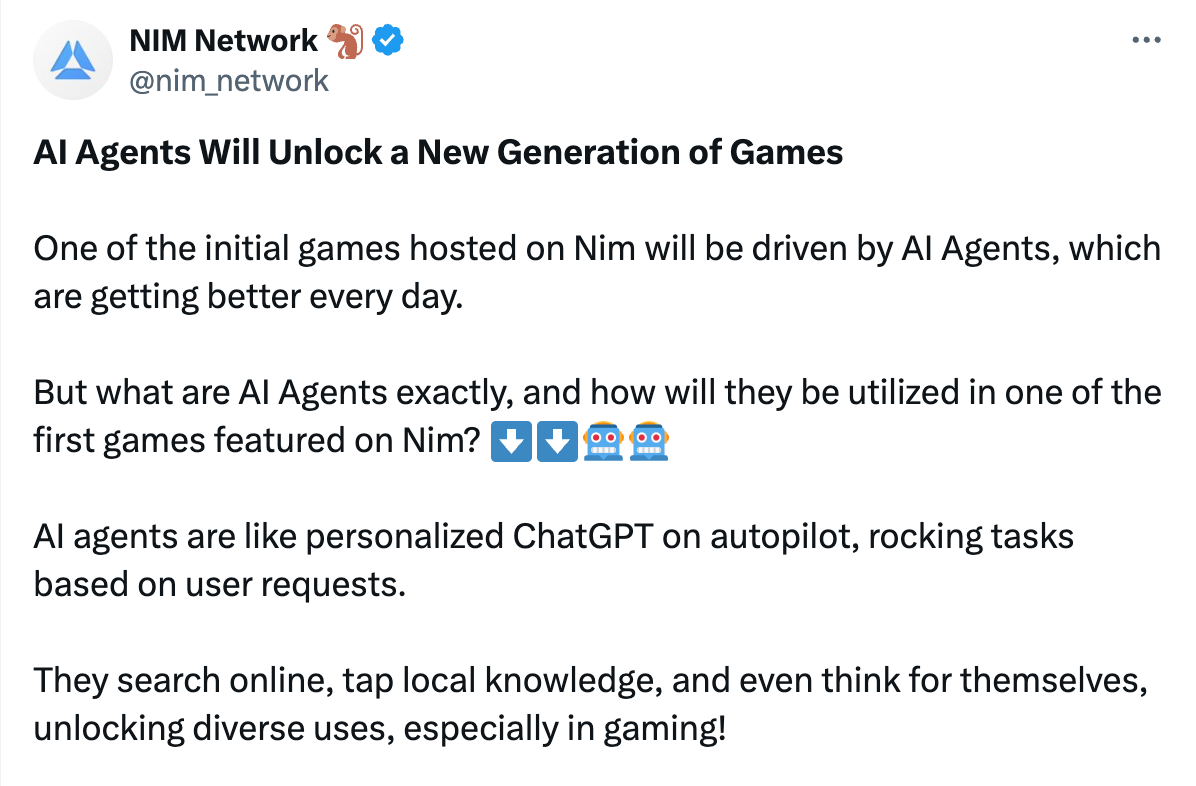
3️⃣ Talus
Talus is a high-performance, parallelized blockchain powered by the Sui variant of the Move programming language. It incorporates a native AI Stack, facilitating the creation of AI Smart Agents—programs designed to operate autonomously, such as bots. Talus provides an optimal environment for developers to easily build and deploy decentralized AI services with flexibility. Within Talus, there will be a marketplace where smart agents, resources, and services can be represented, utilized, and traded in a permissionless and verifiable manner. Furthermore, Talus will be interconnected with other blockchains through the Inter-Blockchain Communication protocol, or IBC, enabling Smart Agents created on Talus to interact with and utilize data or assets across multiple chains.
Infrastructure
4️⃣ Movement
Movement is building an Ethereum L2 utilizing the MoveVM, a virtual machine with Move as programming language. Move was originally developed by Facebook for their Libra/Diem blockchain project but was abandoned due to regulatory issues. However, the language itself remains active and is gaining traction within the space, particularly with multiple L1 blockchains adopting Move, such as Aptos, Sui, and 0l Network. The core idea behind Movement is to introduce this technology to Ethereum by establishing the first L2 with the MoveVM. This L2 will incorporate Celestia as its Data Availability layer and will be EVM compatible. Thala and Echelon, projects that are both live on Aptos, have already announced their upcoming deployment on Movement. One to watch!
5️⃣ Particle Network
Particle Network is a modular L1 powering chain abstraction. With hundreds of rollups and chains, it has become increasingly difficult to manage different wallets, assets split across various platforms, and the necessity of holding gas tokens on every single chain. This issue is commonly referred to as siloed ecosystems: each chain hosts distinct dApps and utilizes different gas tokens, making moving from one chain to another challenging and inefficient, especially for newcomers. Chain abstraction aims to mitigate this complexity by creating an experience where users feel like they are using a single, monolithic chain. In essence, users wouldn’t even know which specific chain they are interacting with. No need to worry about bridging enough gas token to this new shiny chain; Particle Network has you covered. t acts as a universal settlement layer through Universal Accounts and Universal Liquidity, with the aim of making most infrastructure invisible to users. Personally, I anticipate that chain abstraction is the next logical step from modularity, and that both concepts are made to go hand-in-hand in onboarding the next billion users to crypto.

6️⃣ Espresso
Espresso defines itself as a shared sequencing marketplace and finality gadget connecting L2s. In simple terms, Espresso serves as a sequencer layer that multiple rollups can utilize simultaneously. This means that the block ordering process shifts from the usual centralized sequencer run by the rollup team to a permissionless network of nodes operating the Espresso Sequencer. This model offers three main advantages: scaling, decentralization, and interoperability. With its HotShot consensus, Espresso can guarantee fast transaction finality and high throughput. As the sequencer becomes shared among different rollups, cross-chain messaging and bridging between those L2s become more affordable, quicker, and safer. Last month, Espresso raised an additional $28 million in a Series B round led by a16z.
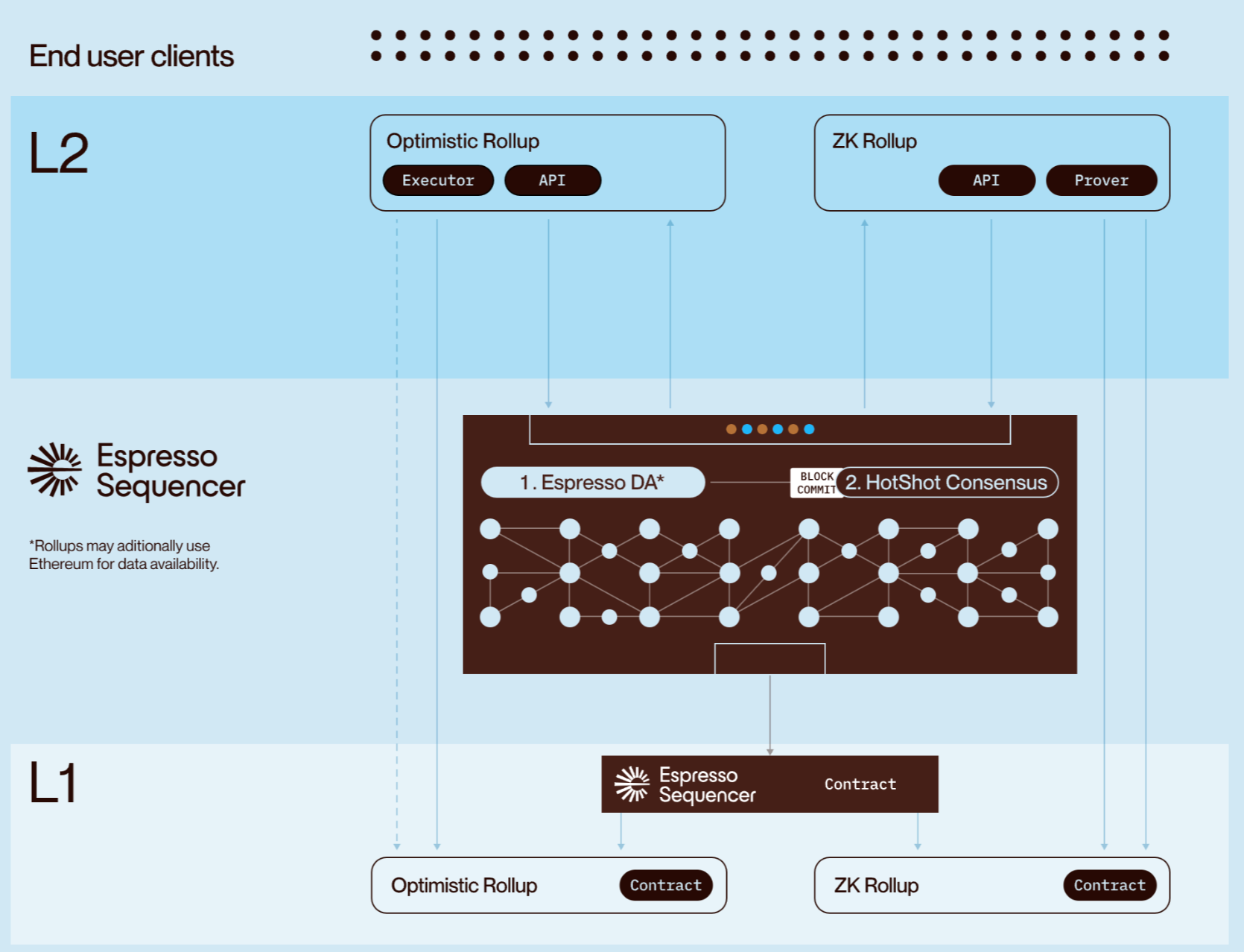
7️⃣ Lava Network
Lava Network offers the first modular data access layer aiming to scale access to any blockchain. The problem addressed by Lava is infrastructure fragmentation. Accessing data from other chains quickly becomes a challenging task for developers aiming to build cross-chain applications, especially if it extends beyond the EVM ecosystem. To overcome this pain point, Lava is building a resilient, decentralized, and unified approach that allows developers to easily retrieve data from every chain supported. Currently, Lava provides an RPC service that routes requests to the best available provider. While RPCs only enable apps to obtain basic data from blockchains, Lava can also integrate modules for more specialized APIs that retrieve specific (and more complex) blockchain data. Lava is currently running a point program that will likely result in some form of an airdrop.
8️⃣ NodeKit
NodeKit is a composability layer that enables blockchains to unlock synchronous communication. The project has recently unveiled Javelin, a block builder that facilitates atomic synchronous composability between rollups. With Javelin, cross-rollup transactions can be executed atomically, enabling two different blockchains to communicate within a single block. This capability opens up many possibilities, such as instant bridging between L2s. Typically, bridging between rollups takes a long time due to the different confirmations required. However, with NodeKit, tokens will be burnt on the first L2 and minted on the other L2 in the same block. Following an initial pre-seed round of $1.2M led by Borderless in December 2023, NodeKit has secured additional funding from the a16z Crypto Startup Accelerator.
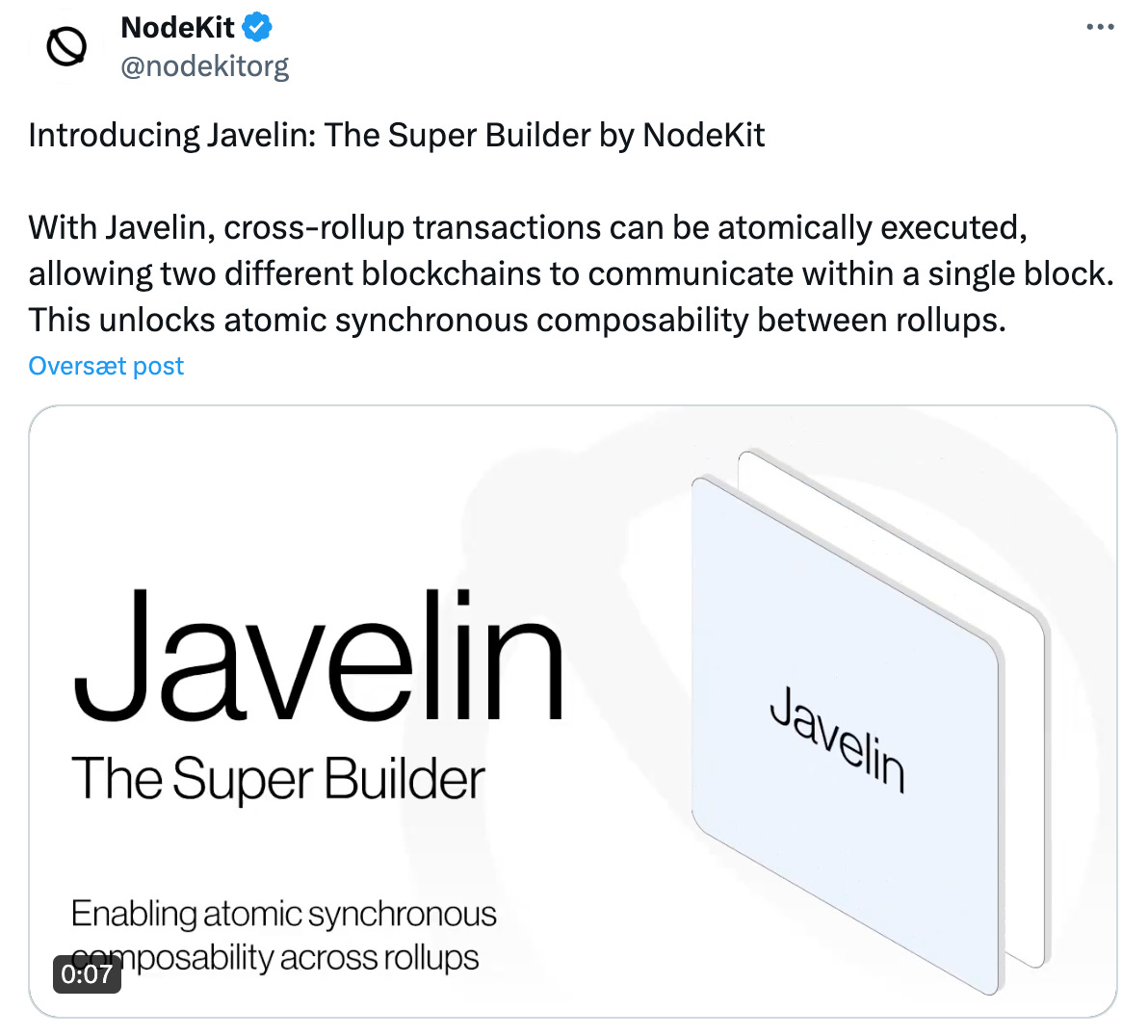
9️⃣ Caldera
Caldera is a Rollup-As-A-Service (RaaS) project. Specifically, it enables users to deploy a rollup with just a few clicks. The process is straightforward: choose a stack, select a data availability layer and the gas token, click deploy, and... that’s it! Personally, I am convinced that once they find a product-market fit, many dApps will transition to an appchain model. This allows applications to overcome the limitations of the L1 they are built on and instantly improve scalability and customizability. This is precisely where the value proposition of RaaS gains significance: it facilitates the easy and rapid deployment of chains for projects. The cherry on top? Caldera manages all the infrastructure for you, including both the blockchain nodes themselves and auxiliary infrastructure (such as indexers and block explorers). This business model has also attracted many projects, such as Manta Pacific, Treasure, and Animoca Brands, and is expected to continue growing in the coming months and years.
Conclusion
Wow! This space never stops building, and that’s precisely why we love it. These nine projects represent just a fraction of what we consider noteworthy in the AI and infrastructure sectors. Undoubtedly, we've overlooked many other cool projects. Feel free to share your favorites with us in the comments section!
Disclaimer: The information provided is for general informational purposes only and does not constitute financial, investment, or legal advice. The content is based on sources believed to be reliable, but its accuracy, completeness, and timeliness cannot be guaranteed. Any reliance you place on the information in this document is at your own risk. On Chain Times may contain forward-looking statements that involve risks and uncertainties. Actual results may differ materially from those expressed or implied in such statements. The authors may or may not own positions in the assets or securities mentioned herein. They reserve the right to buy or sell any asset or security discussed at any time without notice. It is essential to consult with a qualified financial advisor or other professional to understand the risks and suitability of any investment decisions you may make. You are solely responsible for conducting your research and due diligence before making any investment choices. Past performance is not indicative of future results. The authors disclaim any liability for any direct, indirect, or consequential loss or damage arising from the use of this document or its content. By accessing On Chain Times, you agree to the terms of this disclaimer.


